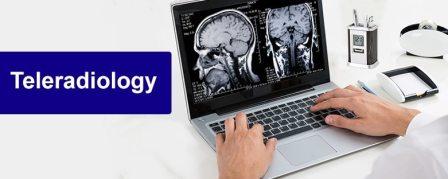
Introduction:
X-ray technology has been a cornerstone of modern medicine for over a century. Its transformative impact on healthcare cannot be overstated. This blog explores the evolution, significance, and the latest advancements in X-ray technology, shedding light on how it continues to shape and revolutionize the healthcare industry.
The Birth of X-ray Technology:
At the end of the 19th century, Wilhelm Conrad Roentgen’s discovery of X-rays opened up new possibilities in medical diagnostics. The ability to visualize the inside of the human body without invasive procedures was nothing short of revolutionary. Early X-ray machines were bulky and primitive compared to today’s sleek, high-tech devices, but the seed of innovation was sown.
X-rays in the 20th Century:
The 20th century witnessed rapid developments in X-ray technology. World War I and World War II drove advancements in portable X-ray machines, which proved invaluable for battlefield medicine. As radiology departments proliferated in hospitals, X-rays became indispensable for diagnosing a wide range of conditions.
Digital Transformation:
The digital revolution transformed X-ray technology. Traditional film-based X-rays gave way to digital radiography (DR) and computed radiography (CR). These digital technologies offered numerous advantages, including faster image acquisition, improved image quality, and seamless integration with electronic health records (EHRs).
The Role of X-rays in Modern Healthcare:
X-rays remain essential in healthcare today. They are used in the diagnosis of bone fractures, lung diseases, dental issues, and various other medical conditions. X-ray technology is also crucial in interventional radiology procedures, such as angiography, to guide minimally invasive treatments.
Advanced Imaging Modalities:
X-ray technology has expanded beyond conventional radiography. Computed tomography (CT) and magnetic resonance imaging (MRI) have become essential diagnostic tools, providing detailed 3D images of the body’s internal structures. These advanced imaging modalities offer unparalleled insights into anatomy and pathology.
Innovations in X-ray Technology:
Recent advancements in X-ray technology include low-dose imaging techniques to reduce radiation exposure, dual-energy X-ray absorptiometry (DXA) for bone density assessment, and cone-beam CT for 3D dental imaging. Artificial intelligence (AI) is also making its mark by enhancing image interpretation and diagnosis.
The Future of X-ray Technology:
The future of X-ray technology is bright. Emerging technologies, such as phase-contrast X-ray imaging and spectral CT, promise to push the boundaries of what’s possible in medical diagnostics. X-ray technology will continue to evolve, providing healthcare professionals with increasingly powerful tools to improve patient care.
Conclusion:
X-ray technology has come a long way since its discovery, evolving from rudimentary machines to sophisticated, digital, and AI-assisted diagnostic tools. Its transformative nature in healthcare remains as strong as ever, helping medical professionals save lives and improve patient outcomes. As we journey into the future, the radiance of X-ray technology’s potential knows no bounds.
Service Areas:- Ghazipur – Jakhanian, Saidpur, Ghazipur, Mohammadabad, Zamania; Gonda – Colonelganj, Tarabganj, Mankapur; Gorakhpur – Campierganj, Sahjanwa, Gorakhpur, Chauri Chaura, Bansgaon, Khajani, Gola; Hamirpur – Rath, Maudaha; Hapur – Dhaulana, Garhmukteshwar Hapur; Hardoi – Shahabad, Sawayajpur, Hardoi, Bilgram, Sandila.
